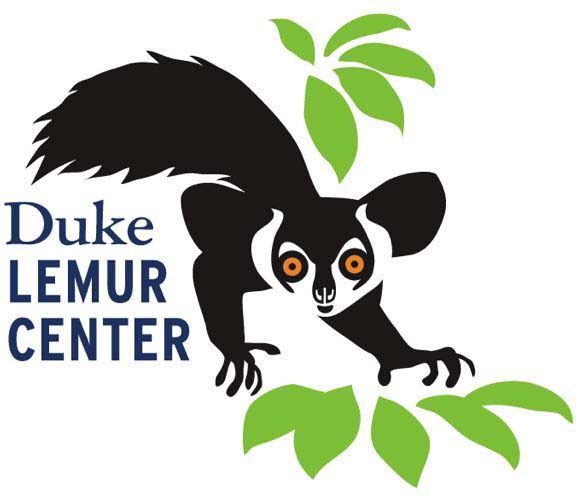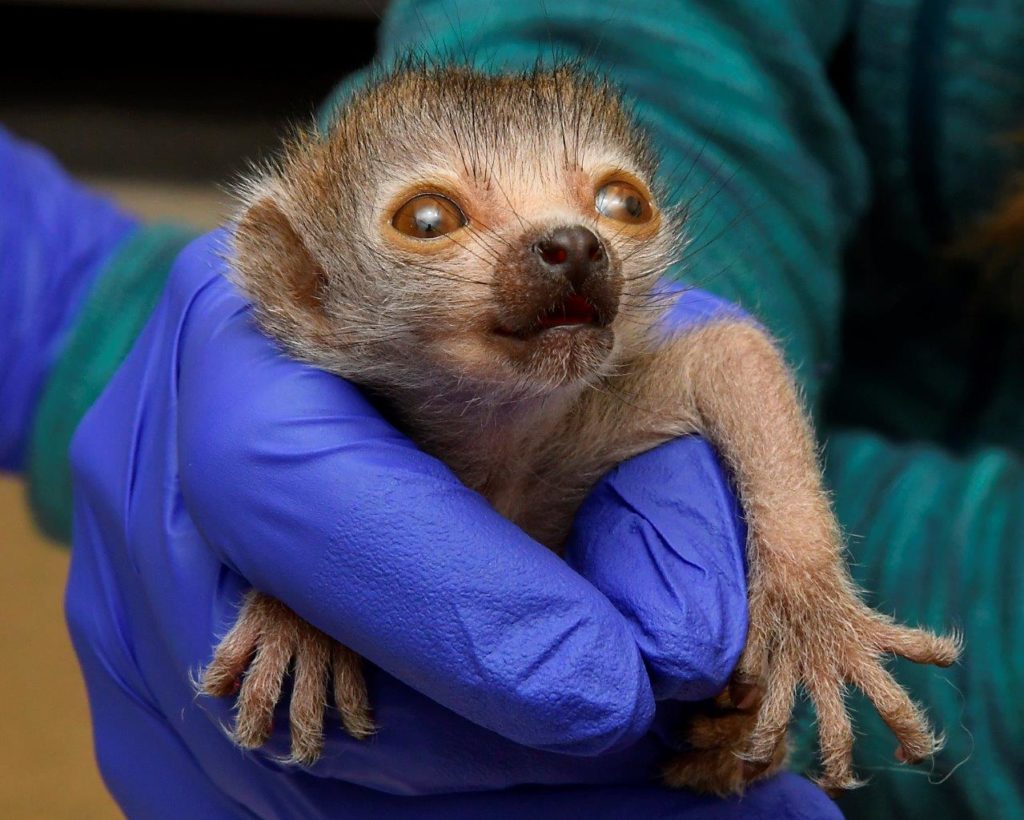
Nedjem, an endangered crowned lemur, was born on April 13, 2019 to parents Sanura and Zuberi. At birth, he weighed just under 57 grams — approximately the weight of a tennis ball. Photo by David Haring.
Welcome to the world, Nedjem!
At 3:45 p.m. on April 13, something very special happened: Sanura, an endangered crowned lemur (Eulemur coronatus), began to give birth! By 4:02, after 15 minutes of stretching, bracing, and squatting, Sanura had settled into her basket inside her “baby suite” – when her keeper, Jenna, caught her first glimpse of the infant’s tiny head. Momma helped her baby along by gently pulling his head with her mouth, delivering the baby within a minute or two and calmly sitting and grooming him inside her basket. The infant’s eyes were open and he opened its mouth and flicked his tongue as Sanura groomed his face.
Now, just over a month later, the tiny infant has been christened Nedjem: an Egyptian name like those shared by all crowned lemurs at the Duke Lemur Center. Sanura means “kitten,” and her son’s name also has a feline flair: The ancient Egyptian cat Nedjem (“sweetie” or “sweet one”), who lived during the reign of Thutmose III, is the first known cat in history to have been given a name.
You can help crowned lemurs!
Crowned lemurs are classified as ENDANGERED in Madagascar and have a very limited range in the northern tip of the island. Their habitat continues to shrink rapidly due to the encroachment of slash and burn agriculture, and total population estimates range from 1,000 to 10,000 animals. The Duke Lemur Center actively works in Madagascar, teaching more sustainable farming methods that eliminate the need for annual burning of the forest and partnering with the Government of Madagascar’s Wildlife Department to improve lemur care and conservation breeding within Madagascar’s zoos. (Learn more about how we’re helping in Madagascar.) Here in Durham, our conservation breeding program — of which Nedjem and his family are a vital part — helps create a “genetic safety net” for these rare and endangered animals.
You can help lemurs, too! Here are a handful of ways to make a real difference in the lives of lemurs here and in Madagascar:
Adopt Sanura: Want to learn more about crowned lemurs AND help support their care, not only here but also in Madagascar? Consider symbolically adopting Sanura through the DLC’s Adopt a Lemur Program! Adoption packages start at just $50, and every contribution helps provide the complex care that all lemurs, especially new mommas and infants, receive every day at the Duke Lemur Center. You’ll also receive quarterly updates about Sanura, Nedgem, and the rest of the family – making this a fun, educational gift that keeps giving all year long! Click here to adopt.
Send a lemur a present: You can send special treats to the DLC’s lemurs, as well as raw materials for us to construct special enrichment activities to keep them happy and healthy. Simply visit our amazon wishlist!
Visit the Duke Lemur Center: The DLC is only partially funded by Duke, so we rely heavily on revenue from tours to help pay for lemur care and housing as well as our conservation work in Madagascar. So, something as simple and fun as visiting the Lemur Center can help us help the lemurs! Just be sure to make tour reservations in advance.
Support the DLC’s Madagascar Programs Fund: Did you know our conservation work in Madagascar is 100% funded by private donations and grants? Please consider making a contribution to support the DLC’s conservation projects in Madagascar. Or, join us for Mission: Madagascar, our annual gala and silent auction! All donations benefit the DLC’s Madagascar Conservation Programs.
Thanks for loving lemurs! See below for more photos of Sanura’s healthy, beautiful family!
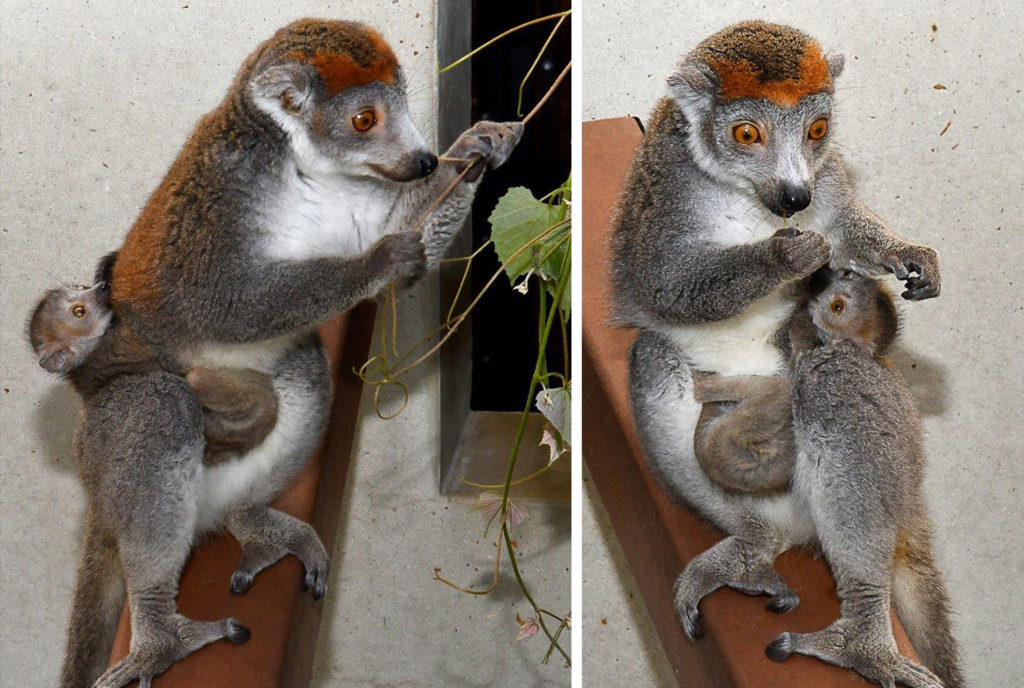
Nedjem (“sweetie” or “the sweet one”) was the name of an Egyptian cat who lived during the reign of Thutmose III, and is the first known cat in history to have been given a name. Nedgem’s mother’s name, Sanura, means “kitten.” Photos by David Haring.
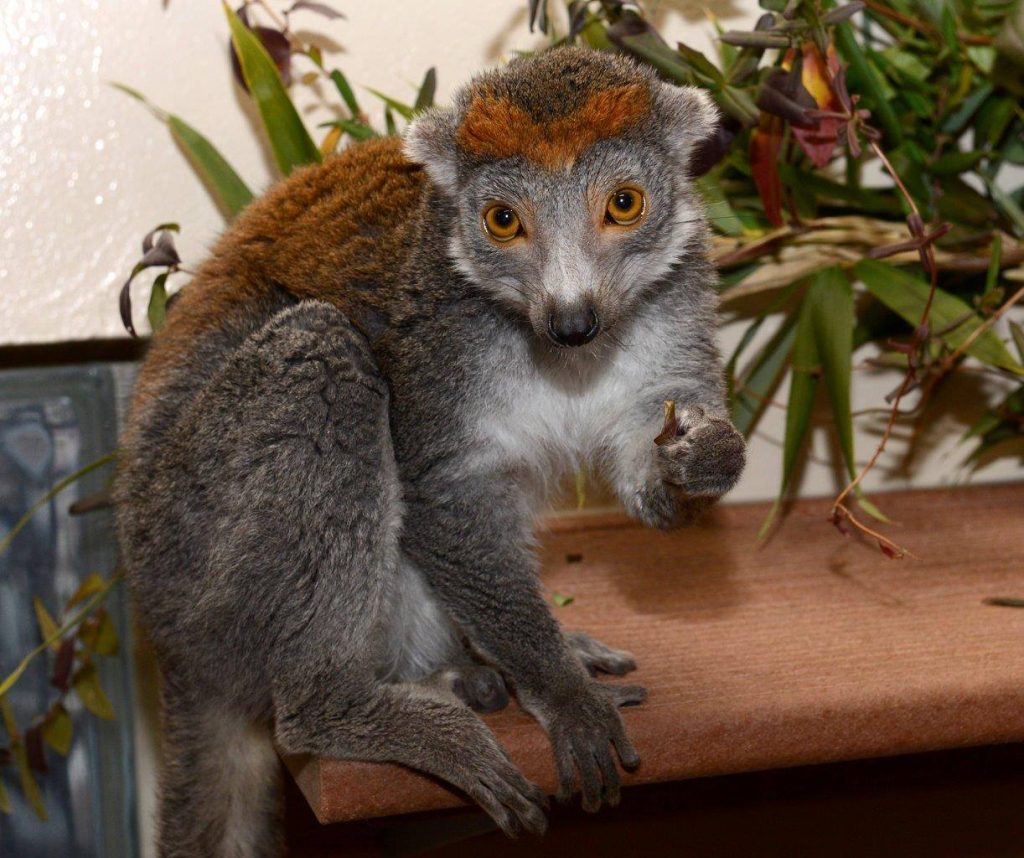
Pregnant females get a lot of extra attention from DLC staff. Sanura’s caretakers went into “baby watch” close to her expected due date. Sanura was offered many of her favorite foods: banana, sumac leaves, apple sauce, and melon. But one day she was not interested in any of these. She would only eat the little blossoms from a redbud tree. This change in appetite and an accompanying restlessness — Sanura, for example, grew increasingly active and began stretching in awkward positions (ex: legs stretched out with back on branch and head looking upside down) — are often indicators that the birth might be soon. And sure enough, it was! Photo by David Haring.
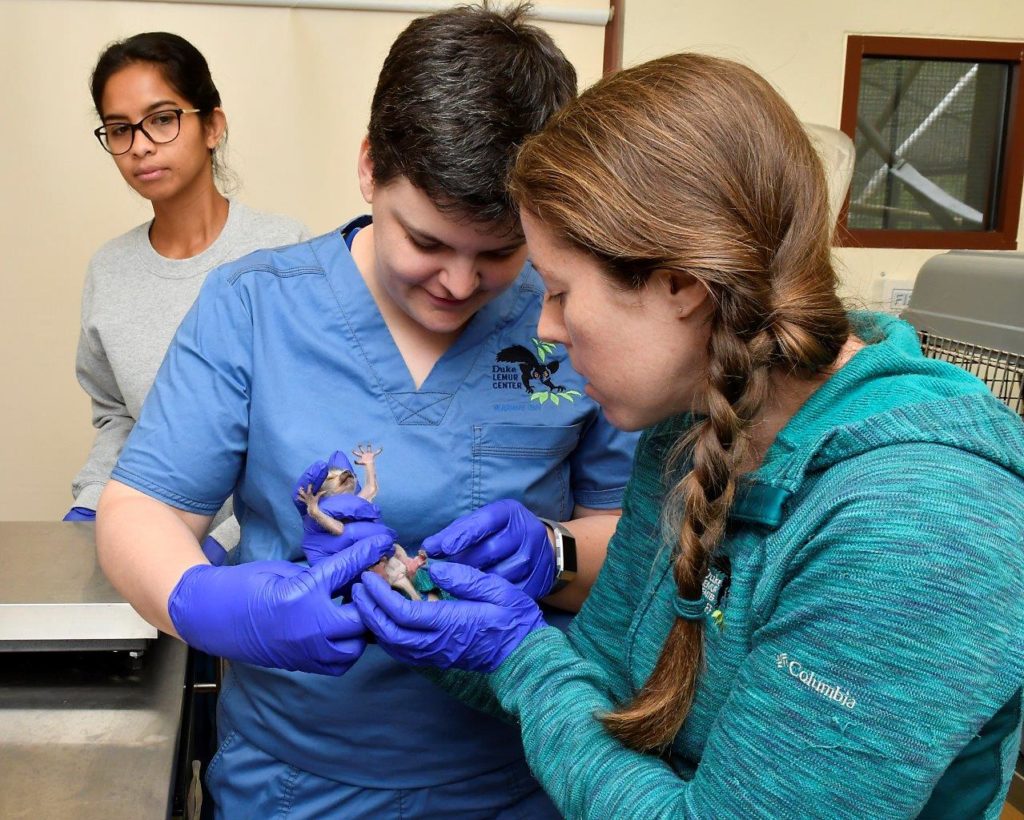
Infant Nedjem receives a routine infant wellness exam by Dr. Laura Ellsaesser. DLC technician Jodi assists while Tsiky, a veterinary intern from Madagascar, observes. Photo by David Haring.
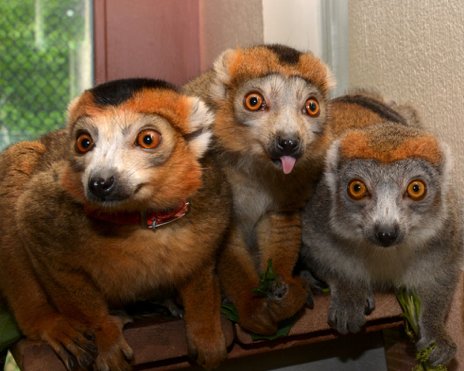
Little Nedjem joins dad Zuberi (left), older brother Shezmu (middle), and mom Sanura (right). Crowned lemurs are the most noticeably sexually dichromatic (different coloration in males and females) species of lemur, with the exception of the blue-eyed black lemur. Female crowned lemurs are predominantly gray with an orange “crown” on their foreheads, whereas males are a much darker reddish brown with a black and orange crown. Photo by David Haring.
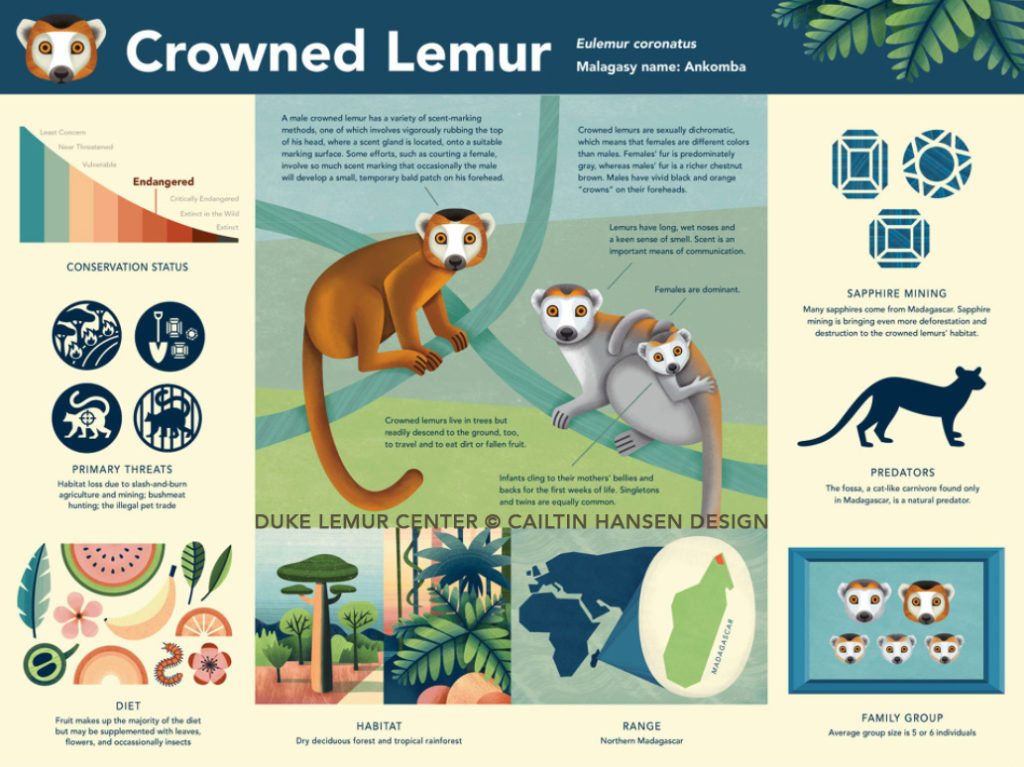
Crowned lemur infographic created for the Duke Lemur Center tour path (c) Caitlin Hansen Design. Click the image for a larger view.

Contact:
Sara Clark, Director of Communications at Duke Lemur Center
sara.clark@duke.edu
(919) 401-7251
Published May 21, 2019. Photos by David Haring.
